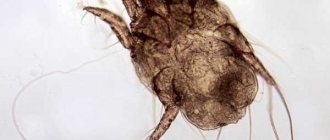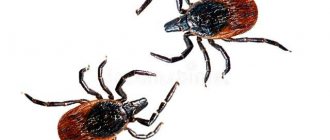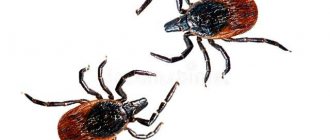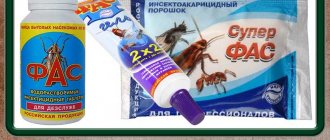Advice: don't persist with the parasite's head.
I don’t want to think about it, but sometimes this happens: a tick has attached itself to you, and despite the horror of the situation, you need to do something about it. Tearing the parasite from your body in your hearts is not an option. Is it dangerous. You need to act strictly according to the instructions, and how, says Yulia Korzhenkova, an infectious disease specialist at the Ilyinskaya Hospital.
It is advisable to detect an attached tick on your body as early as possible. Then there is a risk that he will not have time to bite. Therefore, inspections every two hours in nature are the most important part of prevention.
The inspection should include areas where ticks bite most often:
- armpits,
- groin,
- the back of the knees,
- scalp.
Taking a shower or bath immediately after spending time outdoors is a good idea, as this can help identify and wash away ticks that have not yet attached to the skin.
If the tick is removed within 24 hours of the bite, transmission of the bacteria that causes Lyme disease is very unlikely. But the tick-borne encephalitis virus enters the human blood from the first minutes of suction. Therefore, vaccination against tick-borne encephalitis is the only effective measure to prevent this disease.
How to properly remove a tick with tweezers
- Use pointed tweezers to grab the tick as close to the surface of the skin as possible. Tweezers with a rectangular end are not suitable for plucking eyebrows. Be sure to disinfect them before use.
- Pull upward with steady, even pressure. Do not twist or jerk the tick - this may cause parts of the insect's mouthparts to break off and remain on the skin.
- Never crush a tick with your fingers or even touch it with your bare hands: there is a risk of infection if its saliva or other parts of the tick get into a cut or eye. Use gloves or a plastic bag to protect your hands.
- Thoroughly clean the bite area, hands, and any device used with alcohol/antiseptic or soap and water.
- Dispose of a live tick by placing it in alcohol, burning it, or flushing it down the toilet.
Do I need to use oil?
There is a fairly widespread opinion in society that when the bite area is lubricated with oil, the tick falls off on its own. This opinion is not only wrong, but can also be harmful. Oil cannot be used for these purposes for the following reasons:
- Tick breathing occurs through the back, the oil on which will help the tick to suffocate. The dead insect will remain in the body and will be difficult to remove.
- The oil will frighten the tick and it will splash its dangerous substances into the body. In this case, infection can hardly be avoided.
How to get the tick’s “head” if it remains inside
Sometimes after removing a tick, part of it remains at the site of the bite. Some call this the head of the tick, but it is actually part of the mouthparts. If fragments of the parasite are stuck in the skin, try to remove them in the same way: grab them with tweezers and slowly pull up, without jerking or twisting.
If this cannot be done easily, leave the bite area alone, treat it with an antiseptic and let the skin heal. Over time, the remains of the mite will be torn off with a crust on their own. You should not persist in getting the coveted “tick head”: this will only further injure the bite site and increase the risk of infection.
Where to look for ticks on the body
For an ectoparasite, saturation with blood is a necessary condition for the further development of the body; the entire system is subordinated to the function of biting and holding on to the body of the victim. Among the adaptation mechanisms, the main one is the search for a power source. Ticks can smell skin, sweat, and body heat from several tens of meters away. At the same time, the parasite very carefully selects hunting sites, prey and the place of attachment to it, preferring the neck, elbow bends, armpits and scalp. It is there that the skin is more delicate, and the chances of detecting and destroying the pest are several times less.
How to remove a tick using a twister from a pharmacy
If you know that you cannot avoid encountering ticks, it is good to have with you a special tick remover (also called a lasso handle), which you can buy at the pharmacy. The device is made of plastic, so it is lighter than tweezers and is more convenient to take with you outdoors.
Before removing the tick, wear gloves or use a plastic bag to protect your hands and disinfect the device.
To remove a tick with a twister, you need to pick it up so that it is between two teeth. But despite the name of the device, it is better not to twist it, but to slowly and evenly pull it up, as when using tweezers. Otherwise, there is a high probability that part of the tick will remain in the wound.
Carefully treat the bite area with alcohol or other antiseptic.
Pulling out a tick with a syringe
There is another household method for removing a tick. It involves using a knife and a regular medical syringe, preferably an insulin one, but a 2 cm3 capacity is also suitable. The procedure is quite simple to implement and anyone can perform it. Using a knife, cut off the end of the syringe along with the needle. It is important to make the cut as smooth as possible. The finished product is tightly applied to the site of tick suction and the air is pumped out of the syringe. The vacuum formed in the resulting capsule should push the bloodsucker out of the wound it created. This method allows for the formation of a small bruise, but these consequences are disproportionate to the risk of contracting a disease dangerous to health.
how to remove a tick with a syringe
How to pull out a tick with a thread
Wear gloves or use a bag to protect your hands from contact with the parasite. Disinfect the thread with alcohol or other antiseptic.
Wrap the thread around the insect as close to the skin as possible and tie a knot. And then pull up smoothly and slowly. Avoid twisting and jerking.
Afterwards, treat the bite site with an antiseptic, do not rub or injure the skin.
How to treat a wound
After removing the insect, it is necessary to thoroughly disinfect the wound. This can be done using medical alcohol, hydrogen peroxide, tincture of iodine, cologne or any antiseptic (for example, Chlorhexidine). After treatment, the skin should be left without a bandage (you can seal it with an adhesive plaster). It is necessary to avoid rubbing the wound on clothing for 1-2 days.
You can’t throw it away: what to do with a tick
In Russia and the rest of the world, the fate of a pulled out tick is very different. After you have removed the tick, in Russia it is customary to put the insect in a jar (with damp cotton wool/gauze) to prevent the tick from drying out, and take it to the laboratory for “dispensary examination”. Wait for the results of the study and then do something with the information received.
In Europe, America and the rest of the world, they don’t stand on ceremony with a tick: if you pull it out, you need to destroy it (flush it down the toilet, burn it, pour it with alcohol).
And that's why:
- Mite testing is not 100% sensitive. Negative results may lead to false confidence;
- if the test shows that the tick contained infectious agents, this does not mean that you are infected;
- If you are infected, symptoms may appear before test results are available. And waiting for the result should not be a delay in treatment.
What is a lock cylinder
Before you remove the cylinder from the lock, you need to understand what this element of the locking device is and what it looks like. This part is the code part of the cylinder locking mechanism. It ensures secrecy. The lock cylinder moves the bolts. It has an oblong shape. Inserted inside the lock body. Also called a cylinder security mechanism, secret.
So what to do after a tick bite
After a bite, you must consult a doctor: a therapist, a pediatrician, an infectious disease specialist.
The best thing is to already be vaccinated against tick-borne encephalitis. Otherwise, if you are bitten by a tick and you live in an area with an unfavorable situation for encephalitis, emergency prevention is used: the administration of anti-tick immunoglobulin (no later than 96 hours after the bite). This is practiced only in Russia; it is not carried out in Europe due to unproven effectiveness and the risk of a more severe course of the disease when immunoglobulin is administered.
If the tick is from an endemic area for borreliosis and there is a suspicion that it has been sucking blood for a long time (more than 24-36 hours - this is determined by its fullness) - it is recommended to take the antibiotic doxycycline once for prophylactic purposes. This must be done no later than 72 hours after removing the tick.
As of 2019, these recommendations are also allowed throughout the world for children of any age; in Russia it is permissible for children over 8 years of age: at the rate of 4.4 mg/kg, but not more than 200 mg – once. In any case, the dosage and need for any prophylaxis is determined by the doctor.
How to protect yourself from ticks and in which months is their peak activity? Should you be afraid of ticks in the city? An infectious disease specialist tells
How to understand that you have been bitten by a tick: symptoms after a tick bite with encephalitis and Lyme disease
More about training, nutrition, sports medicine and sports as an activity - in the “Health” section
Subscribe to the Sports.ru telegram channel about health
Photo: RIA Novosti/Igor Zarembo, Pavel Lisitsyn, Mikhail Mordasov
Signs of a bite and why it is dangerous
Blood-sucking insects of the parasitic type are very leisurely; they know that as soon as contact is found with the carrier, the percentage that they will not be able to bite is negligible. Protective coloring and small size make the pest almost invisible on dark and colorful clothing. From the moment of preparation to direct attachment to the skin, it can take about 20 minutes.
At the stage of blood sucking, anticoagulants enter the host tissue, preventing the process of blood clotting and the parasite can feed for a long time. They act like a pain reliever and the person does not feel discomfort. Removing a tick at the initial stage, before the bite, is possible with care and a certain amount of luck. Even while the ectoparasite is feeding, it can only be noticed visually upon careful examination.
Only when digestive enzymes of saliva are injected into the wound and partial dissolution of the surrounding tissue begins, local inflammation develops, itching, a burning sensation appears, and the temperature may rise. Externally, this is expressed in redness, swelling, and compaction, which can be easily felt with your fingers.
The danger lies not in the bite itself, but in the saliva of the pest, along with which the pathogens of Lyme disease and tick-borne encephalitis can penetrate. They are severe and can lead to disability. The most dangerous are ixodid forest ticks and the meadow variety.
Best Health Posts
- How to protect yourself from ticks and in which months is their peak activity? Should you be afraid of ticks in the city? An infectious disease specialist tells
- How to understand that you have been bitten by a tick: symptoms after a tick bite with encephalitis and Lyme disease
- Even athletes die due to sudden cardiac arrest. How to understand if there is such a risk for you
- Why do autumn allergies occur? How not to confuse it with a cold?
- Why do you always want to sleep in the fall?
- Biohacking allows you to sleep 5 hours a day, get enough sleep and be effective: is this true?
- Is sleeping on the floor beneficial or not?
- How to fall asleep quickly and have a good night's sleep? Effective tips for improving sleep
How to rid a dog of a parasite
The tick's jaws are equipped with microscopic hooks. This helps it stay on the body until it is completely saturated. To properly remove an embedded tick, you need to be very careful. The head of the parasite can remain under the skin and cause infection with the following diseases:
- piroplasmosis (causes jaundice and disruption of the functioning of internal organs);
- borelliosis (Lyme);
- ehrlichiosis (symptoms include fever, damage to the eyes and joints).
The encephalitis tick is as dangerous to dogs as it is to people.
A person can become infected with Lyme or encephalitis by crushing the parasite in an attempt to remove it.
To remove a tick from a wound yourself, you need to be calm and collected. If the owner feels that he cannot do this, it is better to seek help from a veterinarian. The price for removing a tick is 350-700 rubles.
It happens that the pet does not allow you to examine the bite site, twists and turns. This means that the animal is in pain. Lidocaine spray is suitable as a local anesthetic. Before starting the procedure, you need to find a well-lit place. They lay the dog down and try to calm it down. The fur around the bite site is carefully trimmed or oiled to improve visibility.
As you know, ticks breathe on the surface of the body, so the parasite needs to cut off oxygen. Suitable for this:
- nail polish;
- petrolatum;
- fat cream;
- vegetable oil;
- special means for removing ticks.
The parasite is lubricated with one of the indicated products and left for half an hour. If the tick is not swollen with blood, it will fall off on its own. If this method is not effective enough, you can drown the bloodsucker in vegetable oil using a syringe. Take a small amount of oil into a syringe without a needle and drop it onto the tick. Then wait another 20 minutes. If the oil method does not work, then you will have to remove the parasite by hand.
Before removing, you need to make sure that all the paws are on the surface and the head is clearly visible. Otherwise, you will need to use tweezers and remove the limbs that have gone under the skin.
After this, you need to try to unscrew the parasite, but so that the head does not separate from the body. The process requires increased caution. They twist the tick counterclockwise or make movements as if they were loosening a tooth. You can remove the inflated bloodsucker with a thread. The loop should wrap around the proboscis like a noose. To pull out the parasite, you need to carefully move the loop from side to side.
Removal with tweezers may result in a crushed body. The loop is also not the most reliable device - it will easily cut off the proboscis. Both methods require extreme concentration. If the extraction was successful, do not rush to get rid of the tick. The parasite is submitted to a laboratory for analysis.
It happens that the bite site is under the eye and on the nose. In this case, the tick is also twisted counterclockwise. The main thing is not to put pressure on the abdomen, so as not to provoke additional discharge.
After removal, it is necessary to treat the wound with any antiseptic, with the exception of brilliant green and iodine.
What to do if your head comes off
If the owner notices that the head of the parasite remains in the wound, he must quickly remove the remains. Before the procedure, the wound should be numbed and wiped with an antiseptic. Then you need to heat the needle on the stove and carefully remove the head. Sometimes the remains are deep and difficult to remove yourself. In this case, the help of a veterinarian is necessary. He will make a small incision and examine the animal’s wound to see if there is a proboscis or something smaller left there.
Over the next three weeks, the owner should closely monitor the dog's health. The incubation period for diseases caused by carnivorous and subcutaneous parasites is 21 days. Treatment begins after the first symptoms appear.
What not to do
Most veterinarians advise against cutting off the tick's access to oxygen. This may result in death rather than attempting to leave the wound. The dead bloodsucker will relax its jaws, which will cause infected saliva to enter the bloodstream. It is strictly forbidden to water the tick with kerosene or gasoline. Also, you should not leave the head under the skin: saliva will go directly into the blood, which will lead to instant infection.
A tick doused with oil or other liquid will not be accepted for analysis in the laboratory. The same applies to bloodsuckers without a head, proboscis, etc.











